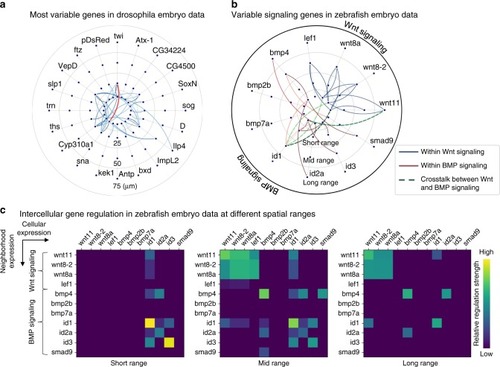- Title
-
Inferring spatial and signaling relationships between cells from single cell transcriptomic data
- Authors
- Cang, Z., Nie, Q.
- Source
- Full text @ Nat. Commun.
|
|
|
|
|
|
|
|
|
|
|
The Slide-seq data, the RNA seqFISH+ data, and the scRNA-seq data for mouse olfactory bulb were taken from ref. |






